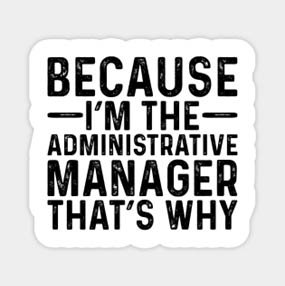Administrative processes are standard processes where we strive for efficient delivery of administrative services with the best possible quality to someone who needs the service. That is, administration should be guided by the Pull principle. If we have an administration task that is perceived as meaningless, then we should question the task. Why do we need to carry it out? Will anyone suffer if it is not carried out? This applies to many companies that have administrative services as part of their product portfolio, but it applies equally to internal processes in almost all companies.
Deliverables are more important than the tasks
Too often we see that administration is developed as task-oriented services where the tasks themselves become the goal, while the deliverables are subordinated or not present. In order to streamline these task-driven services, the focus is on resource optimization, often in direct conflict with optimization of flow and deliverables. Administrative units are becoming more concerned with protecting their own tasks than satisfying customer needs. This can lead to professionally oriented units that become most concerned with as much tasks as possible, to strengthen their own position and use it to get more resources. A striking tendency in public bureaucracy, but also in large companies and organizations.
I discussed this once with a team leader in a service company, where the team was responsible for planning and facilitation. He went through all their tasks and had a perception that their workday was both demanding and important. When asked what deliveries they were responsible for, however, he was a little concerned. He listed one task after another but had difficulty explaining who the customer was and what the delivery consisted of. In the end, a little frustrated, he ended up with a few things they were going to deliver throughout the week. Is there really nothing more we are going to deliver, he said, why are we doing all these tasks?
Is administration more important than value creation?
I have been in some situations where the organization has had to lay off employees over a period. It is surprising to see that those who are laid off are the employees in the executing value streams, while administrative units are left untouched. In such a process, I once asked why a newly hired caseworker, who was training in the human resources department, was not laid off, while production personnel who were central to ongoing deliveries were. I was told that I did not understand how important tasks they had in the administration. According to their understanding, maintaining the tasks of internal administrative staff was more important than ensuring agreed customer deliveries.
Administration departments are the operational employees' service organization
It is often the case that the administration is closely linked to the management of the organization, while production and performing services are organized a little further out. The administrative personnel who interact with management daily get to know them well and are often perceived as more important in the organization than the performing personnel. This is not in line with the Pull principle. Here the customer is the central traction force, and it is the performing production and service lines that are operationally responsible for the deliveries to the customer. The administrative personnel shall provide service to the executing delivery processes, so that they are as efficient as possible. If the administrative tasks become so important in themselves that they are prioritized as more important than support of external delivery processes, we have a Push system where we no longer satisfy an external need, but only satisfy our own needs and push tasks on others or fail to perform tasks that should have been performed.
The customer in focus
Assumption number one in Pull thinking is that, for the task performed in a standard process, there is a customer. This also applies in administrative processes. Tasks that are performed because it is in a role description, something we have always done or something that someone has demanded in a command-and-control regime is something that should be discontinued. Increasing budgets for administrative units should be viewed with extremely critical eyes.
I once spoke to a manager at a company that was a subcontractor to the automotive industry. He spoke somewhat sarcastically to tendencies in society where everyone demanded increased prices and increased budgets every year. In their world, he said, there was never any discussion of increased prices, there was always a negotiation about how much they could reduce their prices next year, although the unit price of all inputs increased. An example of the Pull effect, where the supplier must adapt to the customer's needs.
Pull system
When reorganizing and streamlining, we are often concerned with resources in the operational parts of the organization. We create larger units; we merge departments, and we centralize the administration as we say.
Often, larger devices require more administration. It can also lead to poorer communication and interaction because the distance between management and operational units increases, and daily processes become more complex. Rigorous control and reporting systems are created that make decision-making processes inefficient and slow. This is often not considered when presenting the effect of improvement projects.
We hear about hospitals that have been merged, where the effect is that patient satisfaction has deteriorated, productivity has decreased and employees' job satisfaction has been reduced, while management perceives that they have become more efficient.
With pull system in administration, the same principles apply as in production and logistics. Administration is useless waste if it does not directly add value to the delivery processes or those who carry out the delivery processes. Then it's about pushing tasks and services without them being demanded by the organization's value chain or customer.
Automation of information processes
A common way of streamlining information processes is to digitize them and create ICT systems where the process is carried out automatically by providing the input that the process needs. In many solutions, it has become so advanced that the entire job has been left to the customer. A concept that can be demanding for especially older customers today.
In such system solutions, we also tend to think about what the system can perform, instead of emphasizing the customer's needs. Too often we see how vendors push data solutions and talk about how much information you can get by using their system. They can also offer several additional modules that can give you lots of information that you didn't have before. Questions about the real need for information are rarely asked. When the system people interview employees in different positions in the organization, many things emerge that individuals think are important, but it is rarely discussed whether this information safeguards an important delivery.
In some cases, one can even question whether the tasks performed by the employee in question who is interviewed lead to deliveries. It is tempting to refer to "Peter's principle" which implies that everyone advances to their level of incompetence where they stay until they retire. There is also a story that in large organizations you have entire buildings that are filled up with employees who have been subjected to "kick sublimation". That is, people have lost their jobs, but instead of "being fired", they have been given a new title a nice office and good pay. In these buildings, everyone is busy with important tasks, filling out forms, answering questions, analyzing data, writing reports, but no information goes in or out of the buildings.
Too much information is overprocessing, and even if the information comes from an ICT system, more information usually means that you also must put more information into the system, which means extra work, poorer flow in the process and waste of resources. And remember: Even if it is the customer who must enter this information, it is just as much a waste!
With the use of the Pull principle, computer systems would become simpler, a lot of useless information would have been avoided, a lot of work with input and handling useless data would disappear and the customer would experience better service.
How to introduce Pull in an administrative department
- The starting point for introducing the Pull principle is to be clear about what the department's deliveries are. It is not enough to refer to job descriptions and rules laid down in laws and regulations, it is not the tasks you should start with, you must be able to tell what the deliverables are, who are the customers and what the customers expect from your deliveries. Already here, most administrative departments have a job to do.
- You must have a description of how the process will be carried out up to the delivery. If you don't have a written process, take a small work session, and draw a simple value stream map together. Write the time you assume each operation in the process takes and sum this up.
- Create a simple target indicator such as the lead time for the processes or, if you like, the number of tasks queued at any given time. To keep track of this, you can, for example, create a whiteboard and list all tasks to be performed and count the number of tasks that are ready. If the tasks have different time needs, you can weight these and measure on a representative standard task.
- Start by improving the process or value stream and keep track of the development of the target indicator. After the first process, you can proceed with one by one. You will soon discover that the actions you took on the first process can also be applied to many others. Typical work methods in the improvement work are the use of Toyota Kata, Problem Solving, A3, spaghetti diagrams, graphical representation of development and the like.
All tasks in Administration should be based on a Pull effect in that it is a customer who has a need to be satisfied. Streamlining the tasks and calling it Lean just because you think the tasks are important is not Lean or Pull, it is waste.





